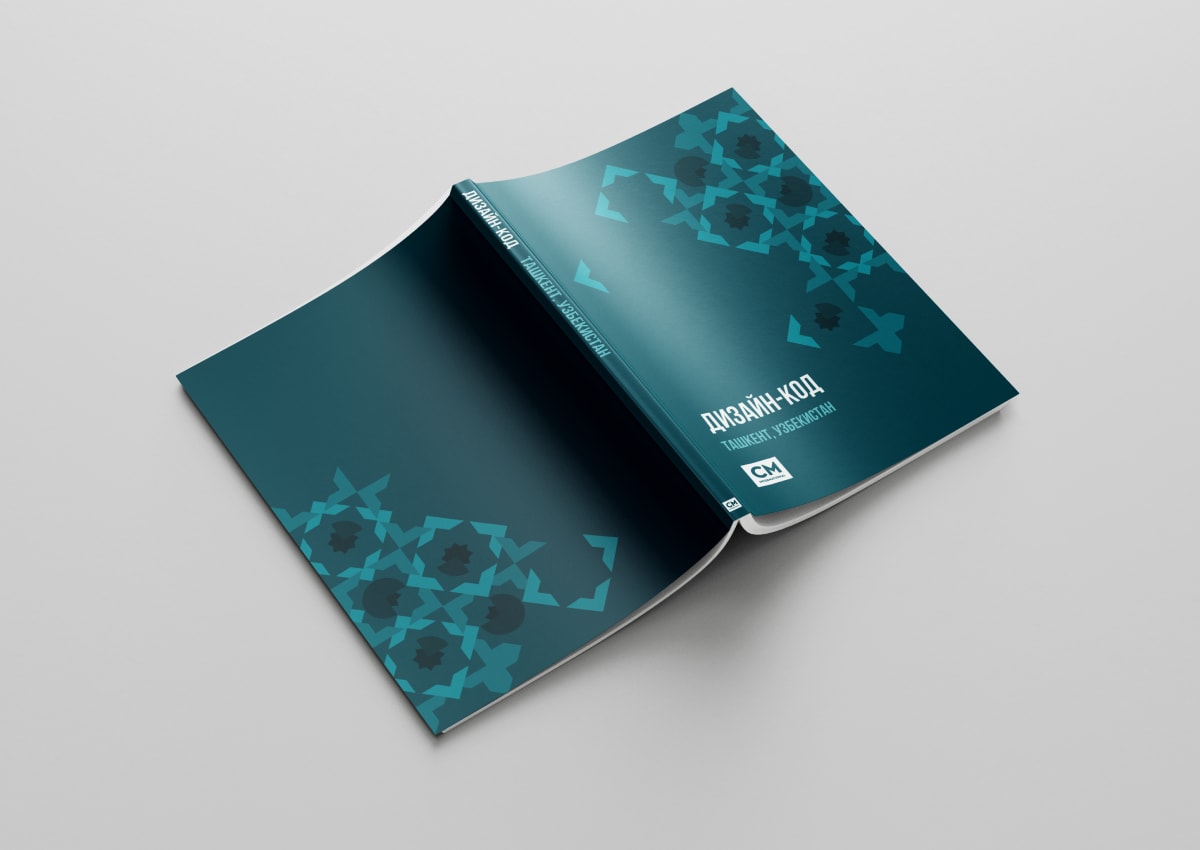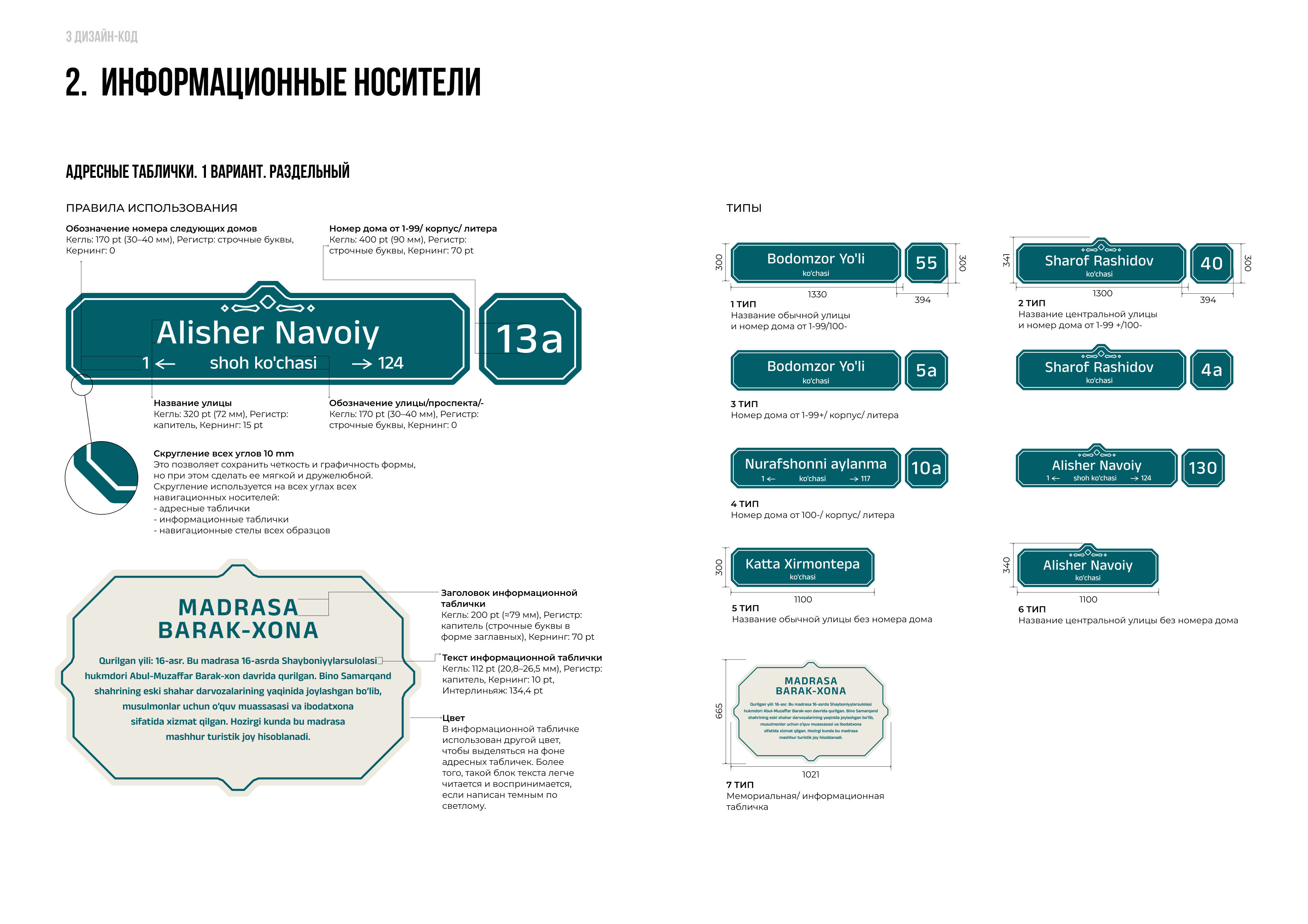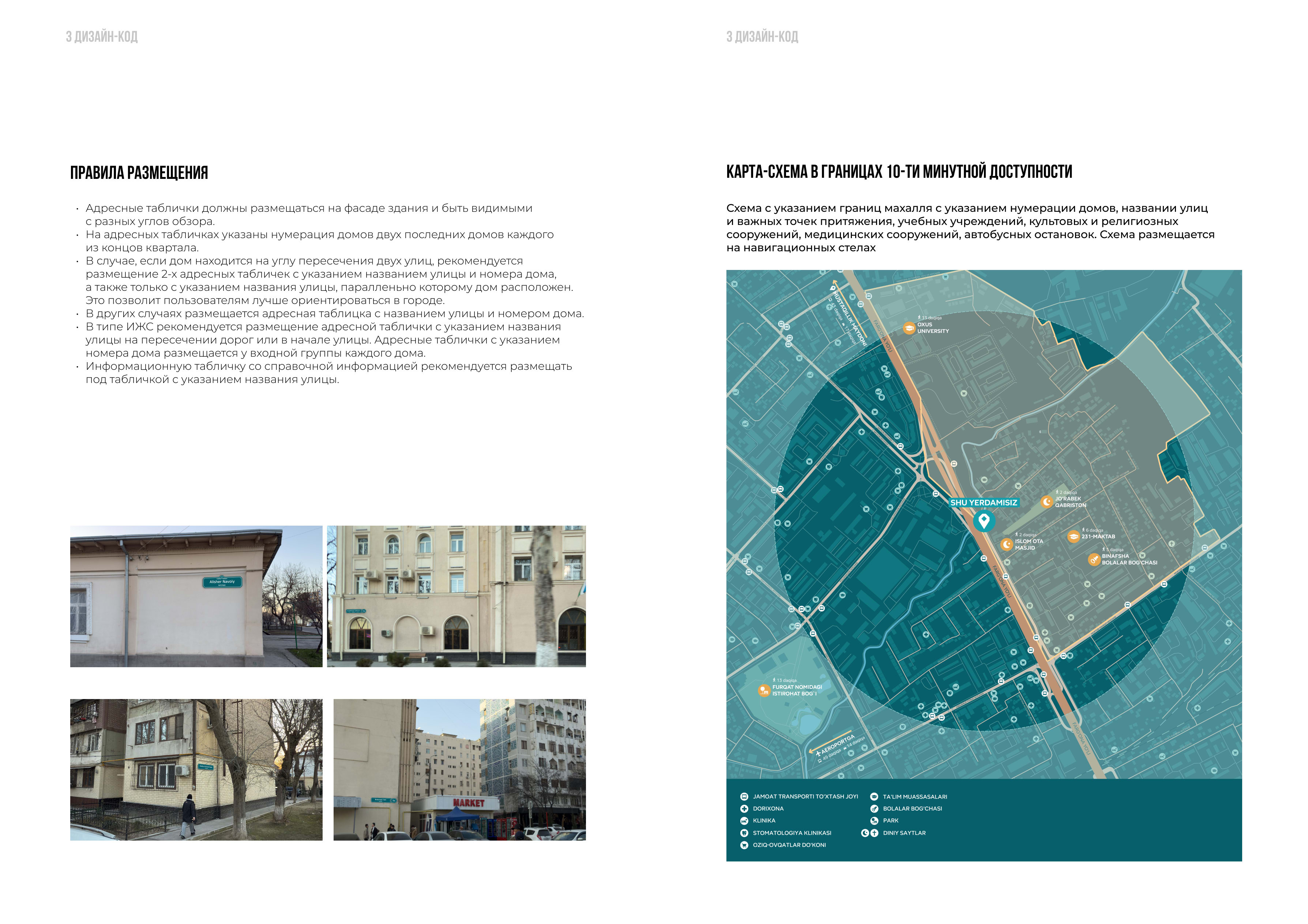tashkent design code
a document that explains how to manage the city's public spaces

How to find a look for a developing capital with a character, a special climate and two millennia of history?
The Tashkent Design Code is a document that explains how to manage the city's public spaces. To create it, we studied the urban fabric of Tashkent and identified typologies of public spaces, for which we set different requirements for the content, layout and elements of urban design. Among them are streets and squares, courtyards and territories of mahallas (traditional quarterly communities and the system of urban self—government in Uzbekistan), recreational areas and territories of public facilities.
We have identified subtypes within each of the territories. The streets were divided into streets inside and outside the city center (thus, the urban center zone was established), they were divided into mainly automobile and mainly pedestrian streets. The mahalla neighborhoods were divided by morphological types in order to establish different requirements for historical low-rise mahallas, modern cottage buildings and neighborhoods of different periods (with different storeys, density and character). For the functional areas of the city — children's and sports grounds, recreation and recreation spaces — we have compiled recommendations on the content and implementation, down to the dimensions of the technical elements.
We have not only developed a typology, but also introduced rules for setting boundaries — they should be used by the khokimiyats (administrations) of Tashkent districts to establish detailed boundaries of all types of urban areas. As a result, a map of the types of public spaces will appear, with the help of which all interested persons will be able to determine the restrictions on the size of signage, the placement of non-stationary retail facilities, and the requirements for the layout of public territories, without the need to request and receive requirements from the city authorities.
In the design code, we prescribed the sequence of implementation of landscaping projects. As part of this, we proposed a process for discussing and coordinating projects with the residents of the mahallas through the mahallan committees (special bodies that essentially work as a trade union of the residents of the quarter). We also establish rules for charging fees for landscaping and maintaining the condition of tourist or gastronomic streets. We also enter the status and list of these streets in our document.
Another important part of the document is the visual area code. On the one hand, it works as a system for regulating information and advertising media. Here, among other things, we have distinguished the concepts of “signage” and “advertising structure”, limited their dimensions and gave clear requirements for their materials and locations. On the other hand, the visual code is a corporate identity for information media installed by the city. We have developed colors and brand patterns, selected fonts and created a design for navigation elements — signs, information steles and address plates on houses.
Design codes are often purely advisory in nature, and in the public perception such documents are needed only to determine the appearance of navigation or to monitor outdoor advertising. The CM International team and the project customer wanted Tashkent's design code to create uniform rules and procedures for different participants in urban processes:
• For planners and architects, this is a kind of technical assignment. The architectural and urban planning councils of the districts will be required to verify the conformity of the results of the development of concepts with the design code.
• For tenants, there are instructions on how to design your commercial facility: outdoor verandas, signage, and other information media.
• For the city, there is a program for the introduction of address signs on houses and navigation media for pedestrians, as well as a regulatory document that can be referenced when working with other stakeholders.
In the future, the Tashkent design code will become part of the new building regulations to be developed by the Government of the Republic of Uzbekistan.




